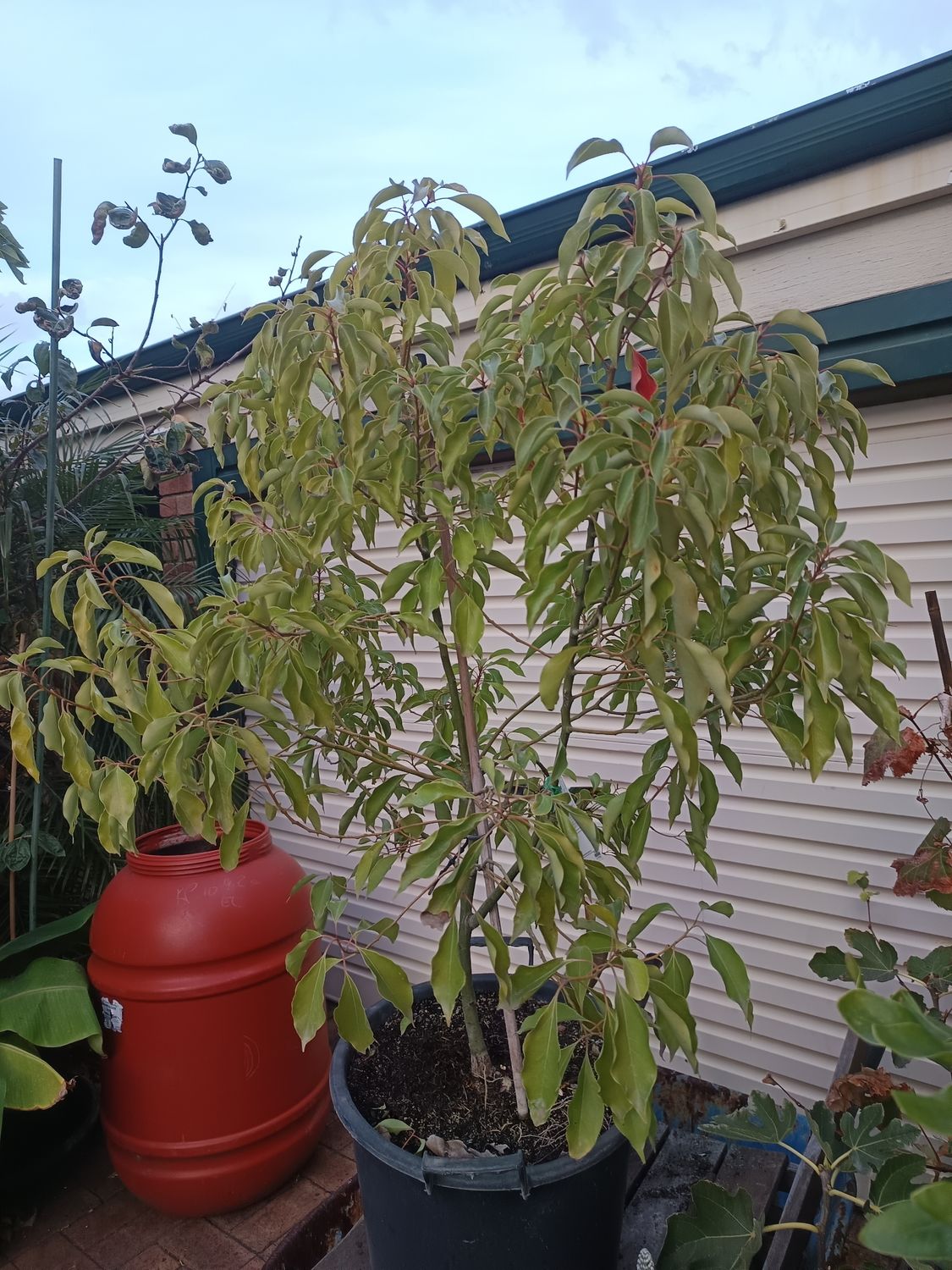Cinnamomum camphora (camphor tree)
Cinnamomum camphora (camphor tree) is a striking evergreen with glossy, aromatic leaves and a wide, domed canopy. Famous for its strong camphor scent, this tree has been planted across Asia and Australia for generations as a shade tree, windbreak, and feature in large landscapes. When crushed, the leaves release a pungent aroma that helps deter pests. In late spring, it produces small creamy flowers followed by bird-attracting black fruits. Though not edible, it's a valuable tree for its historical use in essential oils and woodcraft.
Features
Ideal prune height: 4–10 m
pH range: 5.5–7.5
Sun preference: Full sun
Minimum pot size by year 5: Not suited to pots long term
Time to fruit: 7–10 years from seed
Harvest period: Berries form in autumn
Notable traits: Aromatic leaves, used historically for camphor oil extraction, attracts birds
Best grown in well-drained soil in a sunny position. Once established, it is drought-hardy and tolerates light frost. In suitable climates, it may self-seed readily, so avoid planting near bushland. Avoid root disturbance when young and provide some shelter from strong wind until established.
An iconic tree with a rich botanical and cultural history, perfect for growers wanting something classic, long-living, and full of character—ideal for large gardens or paddock plantings. Not suitable for small yards or near native reserves.
camphor tree australia, cinnamomum camphora plant, evergreen shade tree, aromatic tree, camphor oil history, large feature tree
